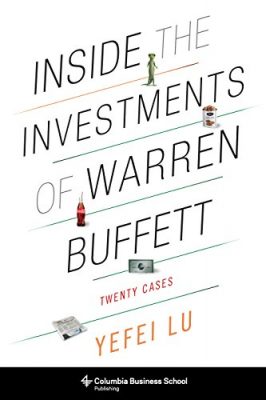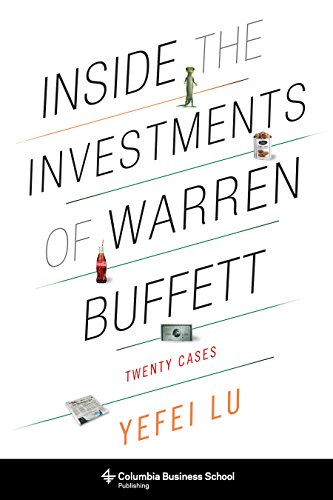 Author: Yefei Lu
Author: Yefei Lu
Publisher: Columbia University Press – 293 pages
Book Review by: Sonu Chandiram
Warren Edward Buffett, 86, is the world’s most successful business investor. As of March 5, 2017 he was the second wealthiest person in the world, with a net worth of $75.4 billion according to the magazine Forbes. Bill Gates was No.1, with an $86.5 billion net worth.
Buffett was rejected by Harvard Business School, but Columbia University admitted him and he a received Master’s degree in economics from there. (There’s hope for all you ‘rejectees’!).
While Buffett owns stock in some overseas companies, the bulk of his vast portfolio consists of shares in large, public U.S. corporations. He has been bullish on America for nearly 70 years, and his stance hasn’t changed. He recently remarked: “The babies being born in America today are the luckiest crop in history… For 240 years it’s been a terrible mistake to bet against America, and now is no time to start.”
How did Buffett win with the many ‘bets’ he made on companies, both public and private, since he began investing in 1958 when he was just eleven years old? Authors of books and articles have answered that question in detail, after examining his rates of return on them, particularly the largest ones. They’ve also enumerated and discussed his investment principles.
Most everyone who have studied Buffett’s strategies describe him as a ‘value investor’ but that is an oversimplification; there is much more to his decision-making than just seeking great value.
Yefei Lu takes a historical, detailed view of Buffett’s investment style by looking at 20 companies – a cross-section of different types and sizes of companies at the time of initial investment – that the ‘Oracle of Omaha’ invested in, and why.
He provides answers to why for example, did the young Buffett invest in the Sanborn Map Company in 1958; what did he ‘see’ in See’s Candies; and why did he think the insurance business was a good one, investing in Geico.
Lu looks at the fundamental numbers Buffett examined, from 1958 to 2014, before deciding to put money into private lesser-known firms such as Dempster Mill Manufacturing Company, National Indemnity Company, Nebraska Furniture Mart, Texas National Petroleum Company, and The Buffalo Evening News; and in well-known, large public companies such as American Express, Burlington Northern, Coca Cola, General Re, IBM, MidAmerican Energy, Salomon, Inc., U.S. Air Group, The Washington Post, and Wells Fargo.
The author examined annual reports, company documents, partnership letters, third-party references, and other sources, to find answers to the questions he asked himself relating to: Buffett’s instincts, timing, use of outside knowledge, and post-investment actions. Lu then sorts through investing options and pinpoints what could be successful ones in terms of company size or location, domestic or global.
The contents of this book are organized around four Parts:
- Part I: The Partnership Years (1957-1968)
- Part II: The Middle Years: (1968-1990)
- Part III: The Late Years: (1990-2014)
- Part IV: Lessons Learned
Yefei Lu looked at qualitative factors (e.g. competitive position relative to others in the same business sector) of companies Buffett and his investment vehicle Berkshire Hathaway invested in. He also examined valuations of those companies, meaning their ’intrinsic value’ based on sustainable earnings over a reasonable period of time. In short, the author provides his interpretation of the risk-reward profile that Buffett developed for each company prior to investing in it.
From reading this book, I find Yefei Lu to be a careful yet incisive analyst of companies’ accounts. This is a well-written book based on foundational planning, research on the 20 companies presented, and good preparation.
Author:
Yefei Lu is a portfolio manager at Shareholder Value Management AG, a value-investment company based in Frankfurt, Germany. Previously he worked for a single-family investment office based in Munich and for McKinsey Company in Berlin. He holds an MBA from the London Business School and BS in Economics from Stanford University.







